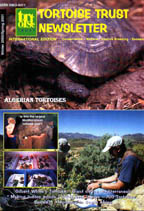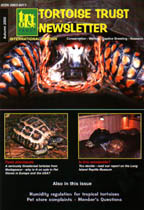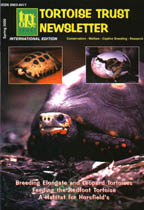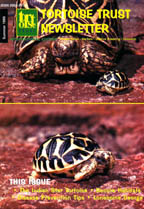
How to Subscribe
Please visit our
NEW website!
PAST ISSUES OF TORTOISE TRUST NEWSLETTER






|
|
How to SubscribePlease visit our
NEW website! PAST ISSUES OF TORTOISE TRUST NEWSLETTER |